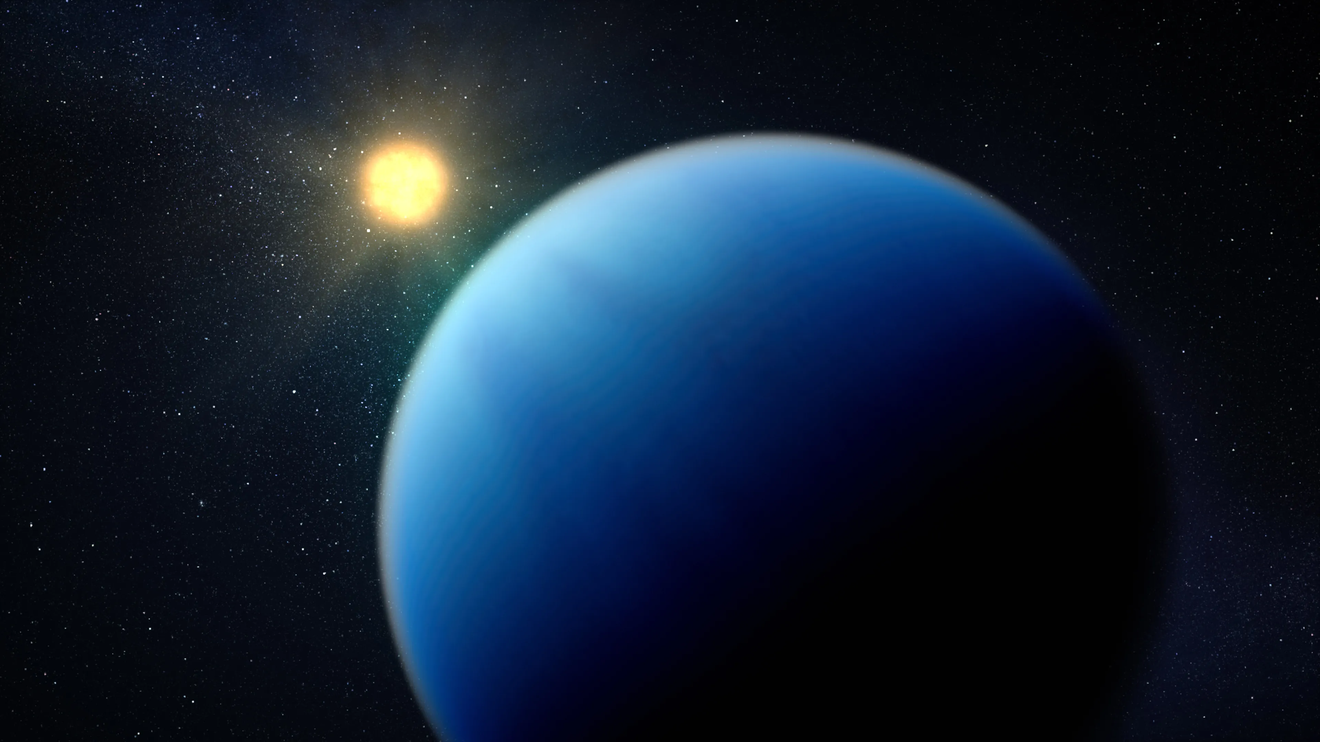
The air around a few planets beyond our solar system is leaking away into space, causing these worlds to get smaller, astronomers reported on Wednesday (November 15). And these planets' atmospheres aren't getting blown away by harsh winds from their stars as you might expect, but rather by their own doing.
About 90 tons of air from Earth's protective blanket, responsible for sheltering life, is known to escape into space every day because our atmosphere gets heated by the sun. At this super slow rate, however, scientists think it would take our planet at least 15 trillion years to be completely stripped of its atmosphere. So there's nothing to worry about on that front.
But a few exoplanets, especially some bigger than Earth but smaller than Neptune, are actually pushing away their atmospheres from within through a process known as "core-powered mass loss," a new study finds. This mechanism is believed to be able to shrink a puffy, sub-Neptune planet all the way down to a rocky super-Earth. With this information, astronomers say they now have sufficient data to explain why they don't see many exoplanets with sizes about 1.5 to two times Earth's. That's the sweet spot between a super-Earth and sub-Neptune.
"Exoplanet scientists have enough data now to say that this gap is not a fluke," study lead author Jessie Christiansen, a scientist at Caltech, said in a statement. "There's something going on that impedes planets from reaching and/or staying at this size."
Related: NASA's exoplanet-hunting telescope spies 8 'super-Earths'
The team suspects that "something" is radiation from deep within these sub-Neptune planets, specifically their hot cores, pushing away atmospheres. "That radiation is pushing on the atmosphere from underneath," said Christiansen.
An alternate (but unlikely) theory for these sub-Neptunes is a phenomenon called photoevaporation, in which a planet's atmosphere is blasted away due to a star's radiation, like "a hair dryer on an ice cube." This is probably not the solution to this mystery, however, because the process is thought to occur in the first 100 million years of a planet's birth, while the new study analyzed much older sub-Neptunes.
Christiansen and her colleagues analyzed exoplanet data collected by NASA's Kepler 2 mission, a revised exoplanet-hunting effort after the Kepler spacecraft faced some technical setbacks. The team looked for sub-Neptunes orbiting stars in two star clusters: The Praesepe or Beehive cluster, which hosts about 1,000 stars, and the Hyades cluster, which hosts about 500 stars and forms the head of the "Bull" in the Taurus constellation. They're 600 million years old and 800 million years old, respectively.
In this age range, scientists found almost all stars had sub-Neptunes with atmospheres orbiting them, suggesting photoevaporation did not occur (or they'd have completely lost their atmospheres by now).
In planets around stars more than 800 million years old in K2's database, however, only 25 percent exhibited orbiting sub-Neptunes. Because the older age of those stars is close to the 1 billion year time frame when core-powered mass loss is expected to have occurred, the core-pushing-related mechanism is likely the reason behind atmospheric escape on these planets, the new study argues.
Either way, "if you don't have enough mass, you can't hold on, and you lose your atmosphere and shrink down," said Christiansen.
This research is described in a paper published Wednesday (Nov. 15) in The Astronomical Journal.







